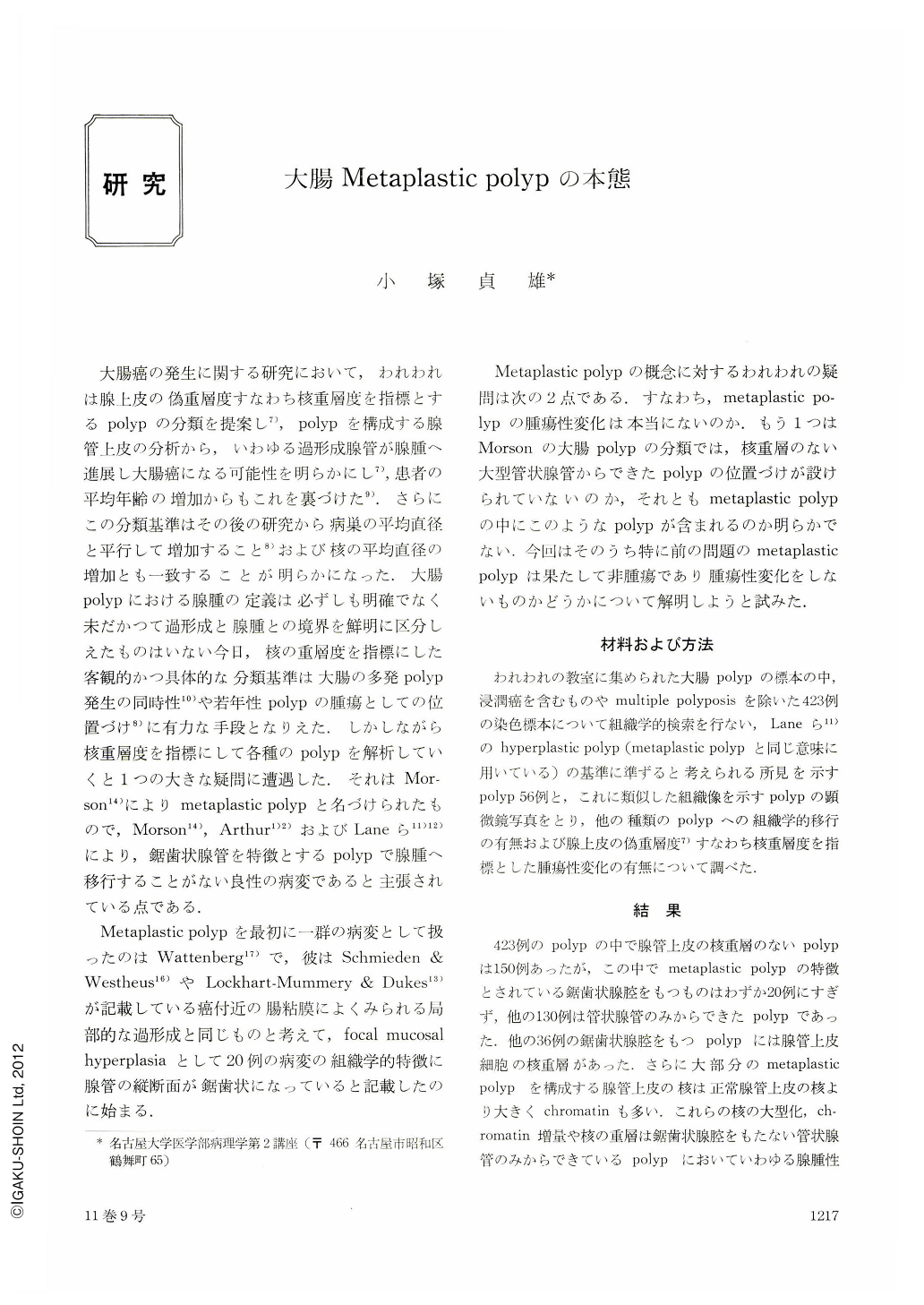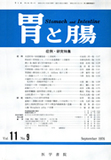Japanese
English
- 有料閲覧
- Abstract 文献概要
- 1ページ目 Look Inside
大腸癌の発生に関する研究において,われわれは腺上皮の偽重層度すなわち核重層度を指標とするpolypの分類を提案し7),polypを構成する腺管上皮の分析から,いわゆる過形成腺管が腺腫へ進展し大腸癌になる可能性を明らかにし7),患者の平均年齢の増加からもこれを裏づけた9).さらにこの分類基準はその後の研究から病巣の平均直径と平行して増加すること8)および核の平均直径の増加とも一致することが明らかになった.大腸polypにおける腺腫の定義は必ずしも明確でなく未だかつて過形成と腺腫との境界を鮮明に区分しえたものはいない今日,核の重層度を指標にした客観的かつ具体的な分類基準は大腸の多発polyp発生の同時性10)や若年性polypの腫瘍としての位置づけ8)に有力な手段となりえた.しかしながら核重層度を指標にして各種のpolypを解析していくと1つの大きな疑問に遭遇した.それはMorson14)によりmetaplastic polypと名づけられたもので,Morson14),Arthur1)2)およびLaneら11)12)により,鋸歯状腺管を特徴とするpolypで腺腫へ移行することがない良性の病変であると主張されている点である.
Metaplastic polypを最初に一群の病変として扱ったのはWattenberg17)で,彼はSchmieden & Westheus16)やLockhart-Mummery & Dukes13)が記載している癌付近の腸粘膜によくみられる局部的な過形成と同じものと考えて,focal mucosal hyperplasiaとして20例の病変の組織学的特徴に腺管の縦断面が鋸歯状になっていると記載したのに始まる.
Out of 423 polyps in the large intestine 56 polyps had a saw-toothed or serrated gland which is characteristic of a metaplastic polyp (Morson14)). Epithelial pseudostratification, that is, nuclear stratification of epithelial cells, seems one of indicators of adenomatous conditions7) and was found 36 out of 56 polyps with serrated glands.
A possible transition of some metaplastic polyps into adenomatous conditions might occur as follows: Proliferation of serrated epithelium in the upper portion of a metaplastic polyp might result in a papillary or villous adenoma and proliferation of tubular glands in the lower portion of a metaplastic polyp might result in a polypoid adenoma.
Moreover, out of 150 polyps without pseudostratification of glandular epithelium, only 20 polyps showed serrated glands. If serrated glands were an essential feature for a metaplastic polyp, most of small polyps which were considered hyperplasia or well differentiated adenoma might not belong to any type of polyps classified by Morson14), Arthur2) and Lane et al.11).
It is concluded that the term “a metaplastic polyp” means only a variation of hyperplasia and/or adenoma which has a potency to develop into an adenoma with papillary infolding of glands or a villous adenoma, in so far as serrated glands are requisite features of a metaplastic polyp.

Copyright © 1976, Igaku-Shoin Ltd. All rights reserved.


